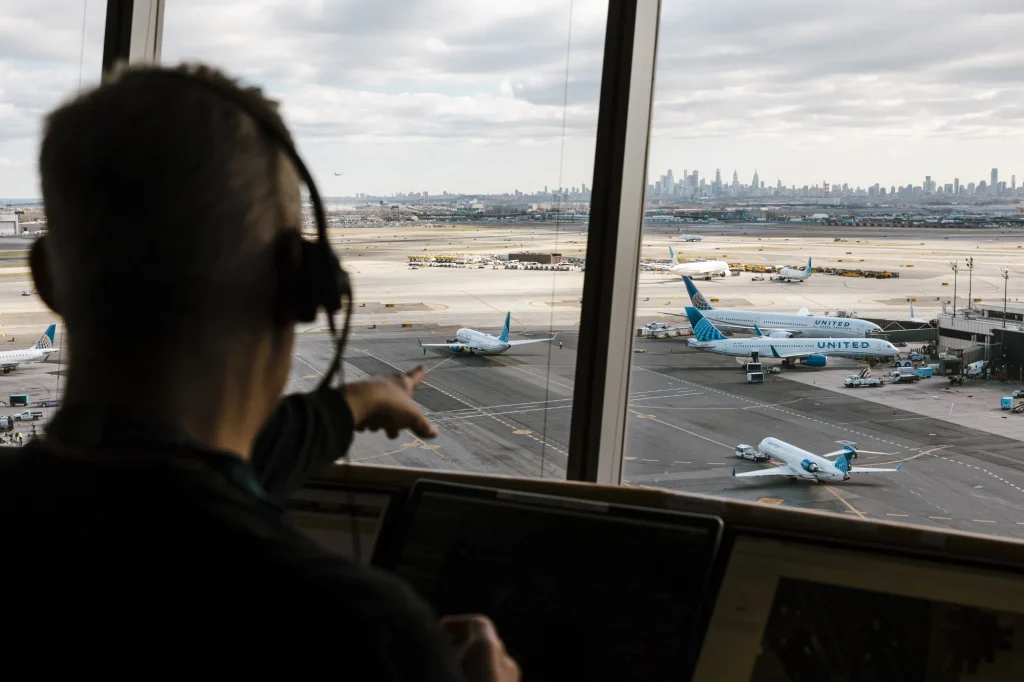[WASHINGTON] The Trump administration’s plan to modernise the ageing US air traffic-control system has gained fresh urgency after vulnerabilities with the existing system pushed United Airlines Holdings to cut flights at the second-busiest hub serving New York City.
Transportation Secretary Sean Duffy aims to release his proposal this coming week for a new system for the Federal Aviation Administration (FAA) to manage the roughly 45,000 US flights that carry about 2.9 million passengers in the US each day. The plan is set to include upgrades to air traffic control systems and facilities, which will require billions of US dollars in new funding from Congress.
The need for the upgrade, details of which have been in the works for months, was brought into focus on Friday (May 2), when United said it would cut 35 daily round trips at Newark Liberty International Airport due to technology breakdowns and a staffing crunch that snarled flights for a full week at the key hub.
“You are starting to see cracks in the system,” Duffy told reporters during a press briefing last week.
The “long-simmering FAA challenges boiled over this week”, United chief executive officer Scott Kirby said in a letter to customers on Friday, resulting in cancellations, delays and stranded passengers. At the same time, more than 20 per cent of Newark controllers walked off the job, he said.
In a Friday statement, the FAA blamed runway construction and staffing issues for the problems on that day.
BT in your inbox

Start and end each day with the latest news stories and analyses delivered straight to your inbox.
But equipment issues and staffing already contributed to delays earlier last week.
The issues at Newark, which handled more than 48 million passengers last year, have highlighted the fragility of the country’s air traffic control system. Modernization efforts gained momentum after a deadly midair collision near Washington in January.
The US Government Accountability Office warned last year that swift action is needed, citing a 2023 FAA assessment that found 76 per cent of the agency’s air traffic control systems were either unsustainable or potentially unsustainable.
In 2024, the FAA said the average age of an air traffic control tower was 40 years, and the majority of radar systems were approaching the same age.
The agency has also been plagued by a longstanding staffing crunch. It had about 10,700 certified professional controllers at the end of fiscal year 2024, more than 3,000 short of the desired levels. Duffy has taken steps to boost hiring, including a slate of new bonuses announced last week.
Duffy and Nick Daniels, the president of the National Air Traffic Controllers Association, visited the Philadelphia site that guides flights into and out of Newark on Friday as problems at the airport persisted. Kirby said he also spoke with Duffy about Newark on Friday, and applauded his longer-term plans for improvement at the FAA.
Kirby called for the US Transportation Department to impose harsher slot restrictions at the airport, a designation that would further limit the number of flights allowed.
United handles about 58 per cent of the passengers at Newark, according to Transportation Department data.
“It’s disappointing to make further cuts to an already reduced schedule at Newark, but since there is no way to resolve the near-term structural FAA staffing issues, we feel like there is no other choice in order to protect our customers,” Kirby said in the letter.
Republicans on the House Transportation and Infrastructure Committee have advanced legislation that would give the FAA US$12.5 billion to modernise air traffic control. That’s down from US$15 billion in an earlier proposal.
Last year, a total of almost 146 million passengers flew through John F Kennedy International, Newark, LaGuardia and New York Stewart International airports, making it the busiest year on record in the area, according to preliminary figures by the Port Authority of New York and New Jersey. BLOOMBERG


